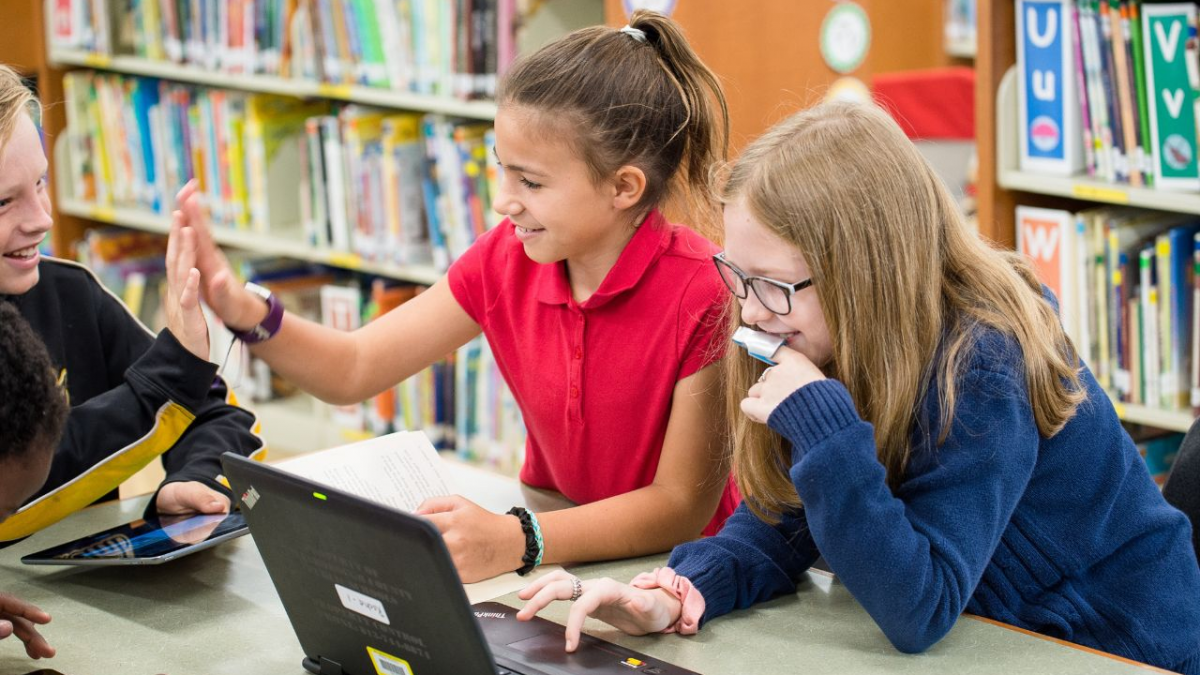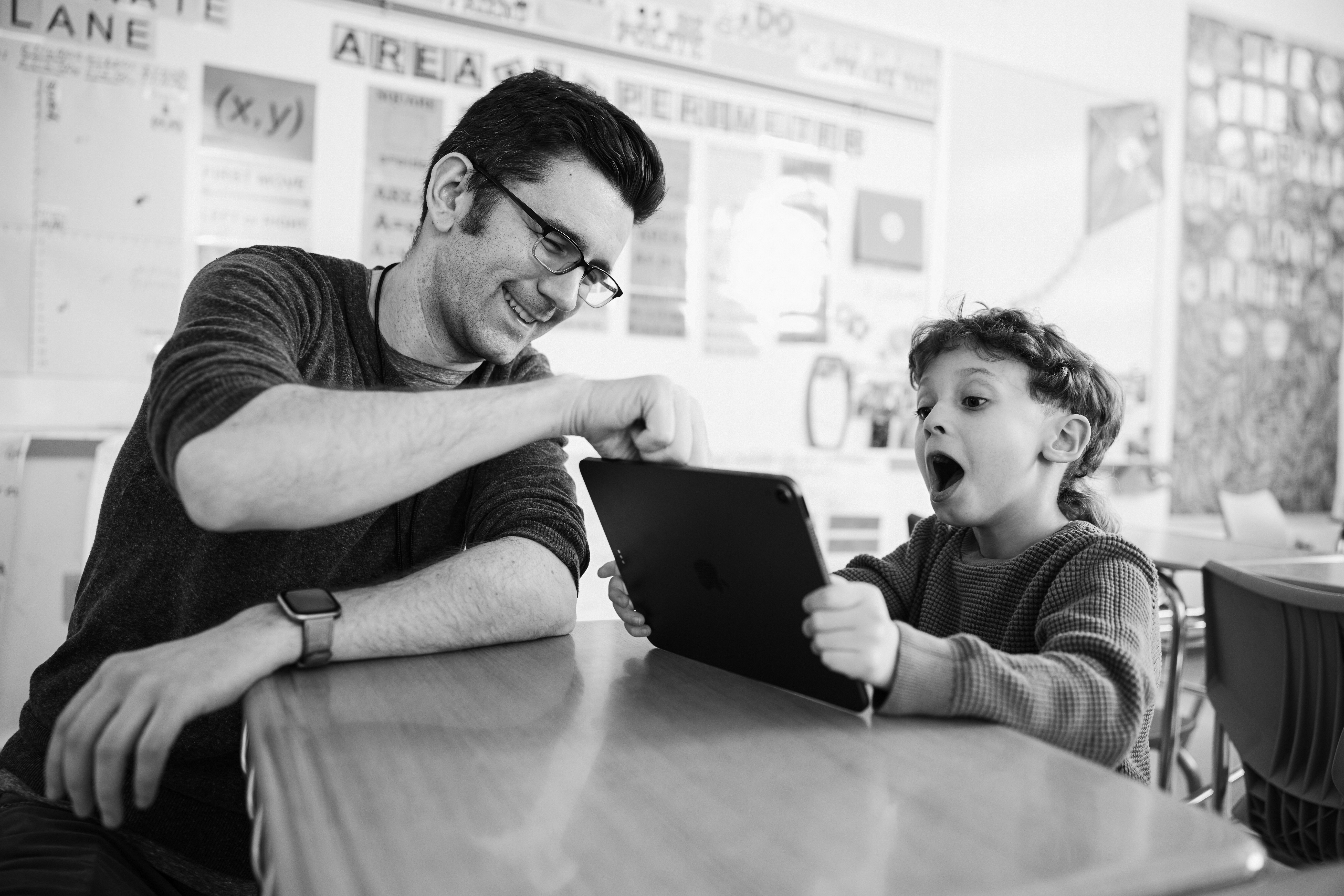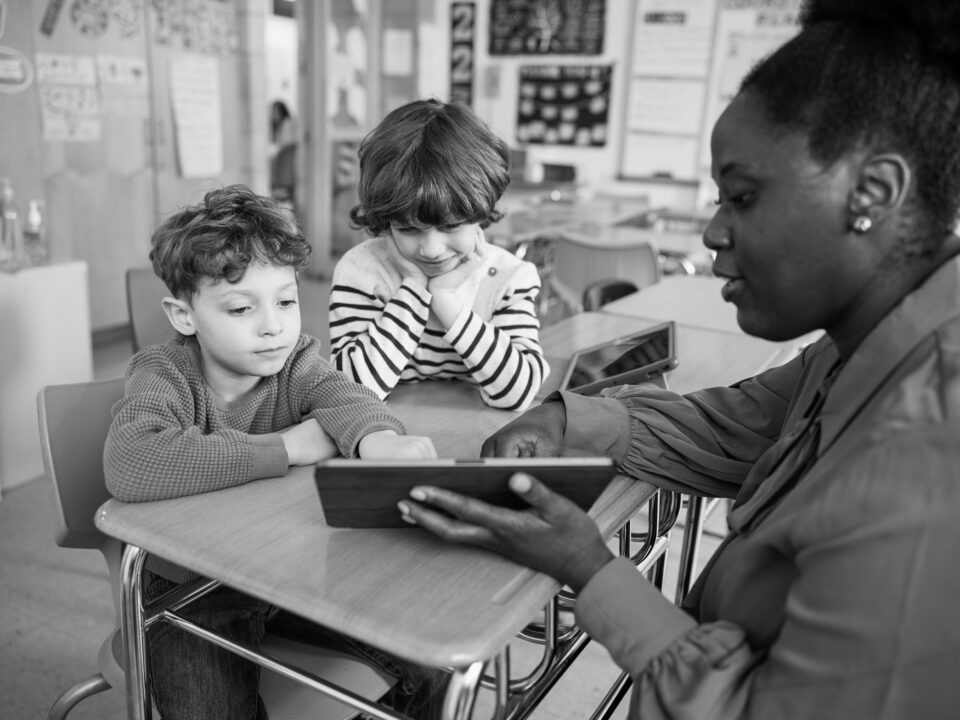- Sales & Support
- +61 2 4225 9698
- [email protected]

Why it’s important to switch off during school holidays
July 16, 2020
Data Tells a Story: Using Renaissance Data to Discover Student Stories
August 11, 2020Digital Literacy: the past, the present and most definitely the future

By: Zora Zaric
It was 1998. I was in Year 3 and Mrs Thomas had just shown us how to write procedure texts. Whilst I still recall How to Make Fairy Bread (and indulge occasionally) the thrill of “free time on the computers” when I finished my work probably had a greater, long-lasting impact. Logging into one of the two clunky desktops at the back of the room, to mess about on Kid Pix or attempt to break my Mavis Beacon Typing Tutor record was the ultimate achievement and for myself, and thousands of others at the time, this was digital technology in the classroom.
In 1998, the NSW Board of Studies English Modules for K-6[i] included the following prescription; “use technology, including computer programs, resources such as tapes, and other audio materials, to support written materials.” Only one outcome in each stage made mention of computers, with students to “use computer technology to begin to construct texts.” There was not a single mention of the word “digital” in the document, let alone promoting digital literacy – it simply did not exist.
When I embarked on my own teaching career, beginning my university degree in 2008, the Digital Education Revolution was in full swing, the Australian Government had allocated over $2 billion dollars to ensure students in Years 9 to 12 were provided with a laptop and high-speed internet.[ii] At this point, I realised that my future teaching experience would be diametrically opposed to teachers like Mrs Thomas. Computers would be at the forefront of the classroom, digital capabilities became an expectation and syllabus documents would go on to be completely re-written once again, this time to include numerous mentions to e-literature, digital technologies, multimedia, and general capabilities “to encompass the knowledge, skills, attitudes and behaviours to assist students to live and work successfully in the 21st century.”[iii]
In today’s classroom, teachers are charged with the responsibility to ensure students become “imaginative and confident users of a range of electronic and digital technologies and understand and reflect on the ongoing impact of these technologies on society.” Inevitably, when we start to explore this in the classroom, we’re faced with the term “digital literacy”. If I asked teachers, researchers, professors, digital content creators and even students, what does it mean to be digitally literate, I would be confronted with a myriad of answers.
Although the meaning of digital literacy can vary greatly by source, even to the point of confusion, it’s we’ll narrow it down to one here. According to Associate Professor Jo Coldwell-Neilson at Deakin University, digital literacy can be defined as ‘the ability to identify and use technology confidently, creatively and critically to meet the demands and challenges of living, learning and working in a digital society,’
With the growing number of students entering the classroom with a overwhelming familiarity and knowledge with various technological devices and applications, we can’t simply assume that these digital natives, are actually digitally literate.
Digital literacy in education encompasses so much more. Simply reading online does not make a student digitally literate. They must have specific skills when reading online text that may contain embedded resources such as hyperlinks, audio clips, graphs, or charts that require students to make choices.
Students today are also being asked to create, collaborate, and share digital content and to do so responsibly. For these reasons, principals, school librarians, and teachers understand the importance of digital literacy skills for students and teaching digital literacy in the classroom.
Why is digital literacy so important?
As students begin to engage with more learning on the internet and online platforms, school leaders and teachers are focusing more on the benefits of digital literacy skills. Students who are digitally literate know how to find and consume digital content. They know how to create, communicate, and share digital content.
Students who are building digital literacy skills understand the basics of Internet safety such as creating strong passwords, understanding and using privacy settings, and knowing what to share or not on social media. They understand the perils of cyberbullying and seek to stop current bullies and prevent others from cyberbullying.
In today’s digital world, nearly every career requires digital communication at some point, so equipping students with the skills to effectively and responsibly find, evaluate, communicate, and share online content is key to their futures. But the benefits of teaching your students digital literacy skills begin in the classroom right now.
Are we already teaching digital literacy?
As a school leader or educator in today’s digital world, chances are you’ve been teaching your students digital literacy basics and enhancing their skills all along, perhaps without even realising it.
For example, do you talk to students about online safety, caution them to communicate responsibly? Do you teach them how to discern trustworthy sources and stress the importance of recognising fake news versus real news? Do you discuss the consequences of what students share online, teach them to recognize and help stop cyberbullying?
If you answered “yes” to any of the above, you’re teaching digital literacy skills. All these lessons and tips teachers share represent digital literacy examples and stress the importance of digital literacy in the classroom. Helping students build digital literacy skills encompasses so much that it’s often easier to break it down a bit. We take a look at three different areas and how they might look in the classroom: Finding and consuming digital content; creating digital content; and communicating or sharing digital content.
Finding and Consuming Digital Content
Students who are well on their way to becoming digitally literate ask important questions about the online content they encounter. Who created the message and why? Where is the message being distributed and what techniques are being used to attract attention? They learn to identify bias and slanted viewpoints and to assess the accuracy of text, charts, graphics, and other data sources.
They also question the points of view, lifestyles, and values that may be represented, or missing, from the content. Part of effectively finding and consuming digital content focuses on how well students can discern facts from misinformation and determine trustworthy sources. The same approaches that we take to analysing a historical written or archaeological source can be applied to the digital world.
Creating Digital Content
We’ve come a long way since the basic word processing expectations of the late 1990s. Today, students have at their fingertips, a plethora of resources that will assist them in creating digital content. From text messages, to Facebook and Twitter posts, blogs, videos, emails and blogs. Moving from the process of consuming digital content to now creating it too. Teachers today look for in-text tools that empower students to become effective creators of content, and as students learn to create, they also learn to question what others have created and shared.
Communicating or Sharing Digital Content
In a world where we often encounter “oversharing”, it’s important that students are aware of what it meant to be shared in the digital world, how to do it safely and effectively and allow for collaboration and discussion in digital formats where appropriate.
Students don’t always think about the implications or potential consequences of what they share online. In your digital literacy lessons, discuss the consequences of what students share online. Help them understand that a digital footprint encompasses all the information that students either passively leave or actively share about themselves online, most notably social media sites.
The Importance of Diverse Reading Content
As teachers focus on teaching digital literacy skills in the classroom, access to diverse reading content is key to helping students gain these skills while also providing opportunities for personalization that lead to reading growth for students at all levels.
Today, as technology transforms what, how, and where students read, we should embrace the idea of giving students access to digital books. When looking to build students’ digital literacy skills, many educators focus on providing safe, age-appropriate online content that accelerates literacy growth while providing all students greater access, equity, and ownership of their learning and delivering real-time data on digital reading practice to move individuals and groups forward.
A strong student-centred digital library helps students build digital literacy skills while also:
- Providing content for a broad range of interest, grades, and reading levels in a variety of formats and genres including fiction, nonfiction, and graphic novels
- Maximizing student choice and engagement by allowing many students to read the same book simultaneously, making every book available as a class set means teachers can use texts for guided reading, class activities and text analysis.
What comes next?
When we look at how dramatically the classroom experience, for both students and teachers, has changed in less than 20 years, it’s hard to imagine what it might look like in another twenty. There are new developments every day, apps and programs to support students with learning difficulties, engage your most apathetic readers and learners, ensure that all students are able to access high quality content online and most importantly, learn from it. As educators sifting through a world of data, these technologies have often made it easier for us to track student progress and growth, and in doing so, we increase our own digital literacy. Digital technologies are an undeniable part of our world and we will continue to learn about them and learn from them. Along the way, we’ll make mistakes and we’ll have questions but there are many resources out there and people available to help. Our goal is to ensure our students are equipped with the skills they’ll need for the future, that they leave our classroom ready for any challenge – even if it’s how to get 100s and 1000s out of a keyboard.
[i] Board of Studies NSW, English K-6 Modules, Published March 1998. https://educationstandards.nsw.edu.au/wps/wcm/connect/ea3cd9a4-6c17-4c18-acff-251c737a19b9/k6engmodules_syl.pdf?MOD=AJPERES
[ii] Carty, Lisa and Walsh, Kerry-Anne, NSW students to get promised laptops, November 30 2008, The Sydney Morning Herald.
[iii] NSW Education Standards Authority, NSW Syllabus for the Australian Curriculum: English K–10 Syllabus, originally published February 2013, reviewed October 2019.


